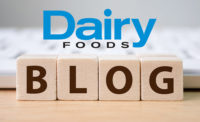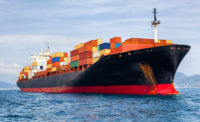US-China trade deal will loosen some nontariff barriers
But until additional tariffs are removed, dairy exports to China are unlikely to grow substantially

On Jan. 15, 2020, the United States and China signed “phase one” of a trade deal. The countries’ relationship has been trending downward for the past two years, and the deal does mark a possible inflection point.
For now, the United States will not be putting additional tariffs on Chinese imports and is even rolling back some tariffs. China is agreeing to reduce nontariff barriers and to increase its purchases of U.S. goods. However, China didn’t agree to remove its retaliatory tariffs on U.S. products, including dairy.
From where we are standing right now, it seems likely that China will follow through on removing nontariff barriers, but until the additional tariffs are removed, we won’t see substantially higher dairy exports to China.
Loosening barriers
If you think the Federal Milk Marketing Orders are arcane, confusing and highly technical, try reading up on nontariff barriers to trade. Each country has its own rules and processes that need to be followed to bring dairy products into the country. The amount of bureaucracy is amazing.
As part of the phase one agreement, China is agreeing to loosen some significant nontariff barriers, including:
- China will recognize U.S. food safety standards as being equal to its own so that individual dairy plants don’t have to be inspected by Chinese officials before they can export to China.
- China will allow imports of U.S. sheep/goat dairy products, which it hasn’t in the past.
- Whey permeate will be approved for human consumption.
My guess is the changes to the sanitary rules around U.S.-China dairy trade will be implemented. If China leaves these barriers in place for other exporters, it will give the United States a small competitive advantage in the long run, but these changes aren’t going to result in a large increase in U.S. exports to China in the next 12 months.
If China follows through with its promised purchases of about $40 billion in U.S. agricultural goods per year, it would result in a massive shift in global agricultural trade. The proposed increase in 2020 and 2021 seems a bit ridiculous, considering historical U.S. exports to China.
China is importing somewhere between $120 and a $140 billion worth of agricultural goods a year, so could it shift from buying $20 billion of that from the United States to $40 billion? Yes, if the price was right or if its will to make the shift was strong.
After the signing ceremony, Chinese Vice Premier Liu He indicated that Chinese firms would buy U.S. goods “based on market conditions.” So it doesn’t sound like the Chinese government is going to make a big push to get Chinese companies to buy U.S. goods, and the phase one deal doesn’t remove any of the existing tariffs that make most U.S. dairy products uncompetitive based on price.
A limit to growth
If China does follow through with large purchases of U.S. agricultural goods, it would be bullish for U.S. dairy prices, but there would be an upper limit for prices.
From a global view, China buying more from the United States probably means the country will buy less from other exporters. So it would just be a reshuffling of global trade flows, not an increase in total global demand.
For dairy, we could see higher dairy prices due to Chinese purchases of U.S. dairy products, or we could get higher dairy prices if feed prices are driven up. But to get bullish, we need to see some signals from the Chinese government that it will either force companies to buy more U.S. agricultural goods or that it is dropping the retaliatory tariffs and creating more competitive “market conditions.”
Looking for a reprint of this article?
From high-res PDFs to custom plaques, order your copy today!



.jpg?height=200&t=1623938483&width=200)

